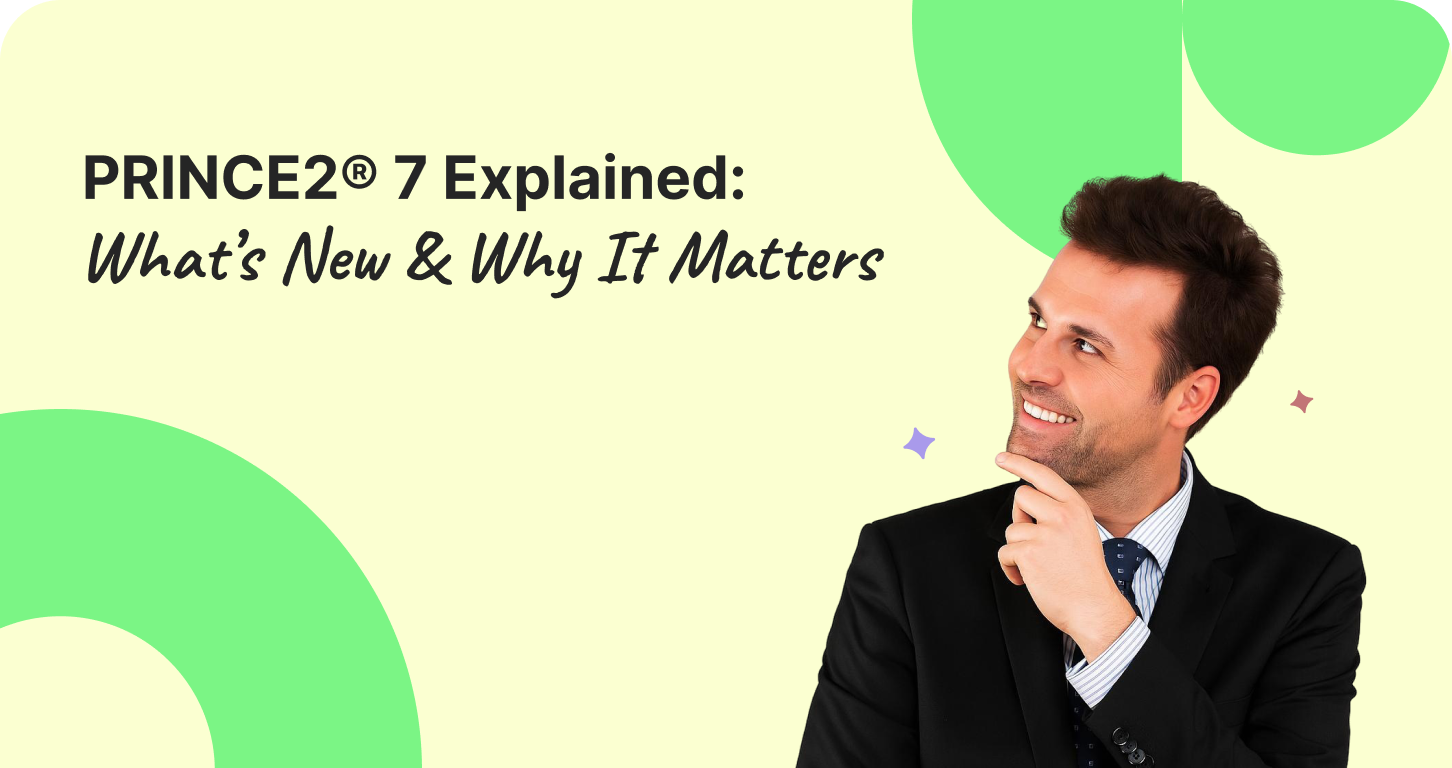
PRINCE 2 is a famous project management framework used in all project management industries. It’s an organised framework to maintain structure across all projects despite of the size of the project.
History & Evolution of PRINCE2
PRINCE2 was introduced in the 1980s. It was a method introduced by the UK government to manage IT projects. It was introduced as PRINCE. However, over the years, it evolved and grew into a globally recognised framework that drove success in projects across organisations in various sectors called PRINCE2 7.
PRINCE2 7 is the latest PRINCE2 version designed for the world. For all kinds of projects.
What’s new with PRINCE2 7?
The 7th Edition of the framework is the latest version released in 2023. These are the new updates made in this update.
- Themes are replaced with practices
- People are at the heart of projects
- New performance targets
- Clear adaptability for all types of projects
- Roles and responsibilities simplified
In the previous versions, the whole framework was built around 7 Themes. These were the core areas that every activity had to manage in order to stay on track.
They were,
- Business case(why are we taking this project)
- Organisation(who’s responsible for what)
- Quality(standards that would make this good)
- Plans(how will we be doing the work)
- Risk(can things go wrong, how are we dealing with them)
- Change(what do we do when we get change requests)
- Progress(how do we monitor performance)
These areas were constantly monitored throughout the whole process. Although these were useful, managers found it very static with too much documentation. It lacked flexibility.
Therefore, in the latest edition they replaced it with Practices. These are methods that can be repeated practically. They cover the themes while going one step further and showing how practically implement them.
People are at the Heart
The previous editions were well known for being too heavy on processes. It had structure and control, but they don’t deliver projects, people do.
It didn’t focus on important aspects such as leadership, motivation, collaboration or teamwork which lead activities to wobble.
Therefore, the new edition, implemented a new aspect called People. It focuses on,
- How to create an environment of appreciation and value?
- Understanding stakeholders like they’re your life partners
- Communicating and making sure everyone’s on the same page
- Creating leaders who inspire, not dictate
- Understanding when to accept change
The main reason that lead for this addition of people element is the remote and hybrid styles of work.
When the previous versions we introduced, remote and hybrid works were rare, and collaboration tools were still advancing.
When everything turned virtual, even communication went digital. The success of projects depended on trust and empathy rather than Click Up and Monday.com. So, this addition was a necessary evolution.
A New Performance Target: Sustainability
A performance target is a factor used to measure the success of a project. Earlier, there were 6 performance targets namely,
- Time
- Cost
- Scope
- Quality
- Benefits
- Risk
If a project was delivered within the above targets, it was considered as golden.
Sometimes, even when it ticked all the above 6 boxes, there was a negative impact by the product delivered either on the people, environment or the organisation’s reputation.
Therefore, a 7th performance target was implemented- Sustainability.
So now, not only does everything get done and delivered, but nothing also leaves a bad mark behind.
Clear adaptability for all types of projects
No 2 programmes are the same. Some massive extending for years while others are small with a short deadline.
Managing all types of projects with the same rules and paperwork isn’t practical. That’s like wearing a winter coat to the beach.
In simple, tailoring means bending and adapting the rules of PRINCE2. It’s not something new. Tailoring has been made more stronger and clearer in this edition.
Simplified Roles and Responsibilities
In the previous editions, roles were defined in 3 tier hierarchy as the project board, project manager and team manager.
The issue with this hierarchy was that it wasn’t clearly defined with the responsibilities leading to the same person wearing multiple hats at times.
As a result, many found themselves ignoring the PRINCE2 roles and creating roles based on their preferences.
In the latest edition of the framework, roles and the responsibility of each role is assigned clearly preventing 1 person wearing different hats at the same time.
Conclusion
PRINCE2 has been a structured framework with control, consistency and clarity at its core. The latest edition adds more to suit this age, digital and flexible.
Great projects don’t just need management. It needs leadership, purpose and adaptability.

